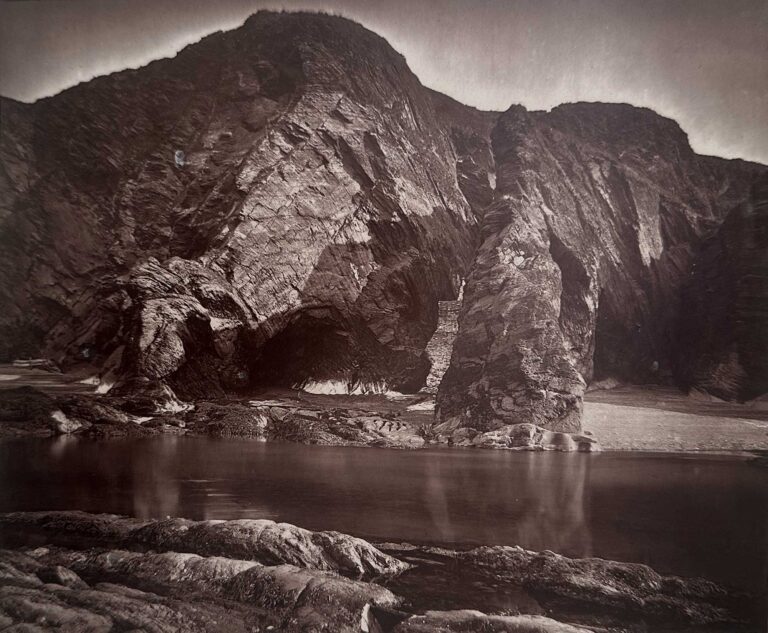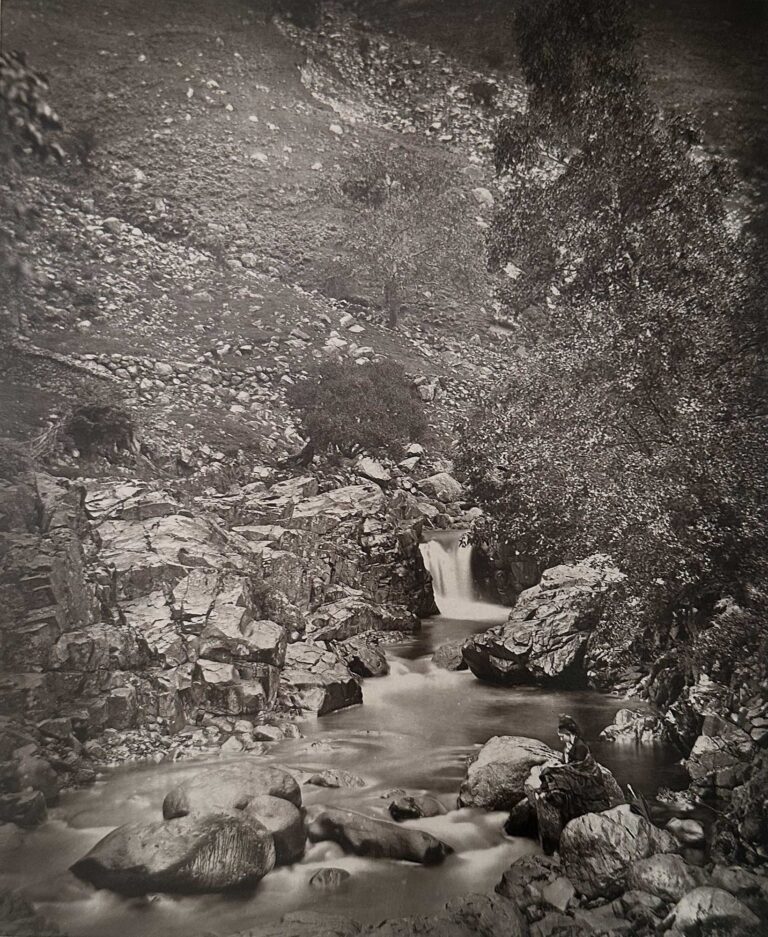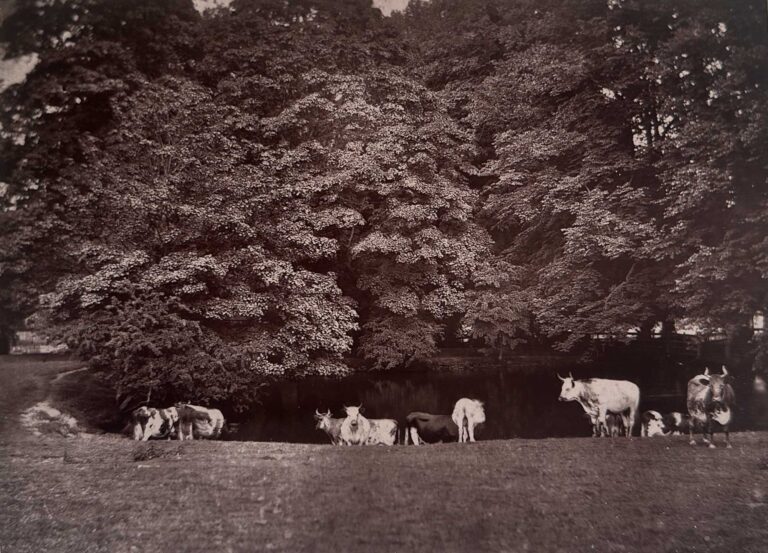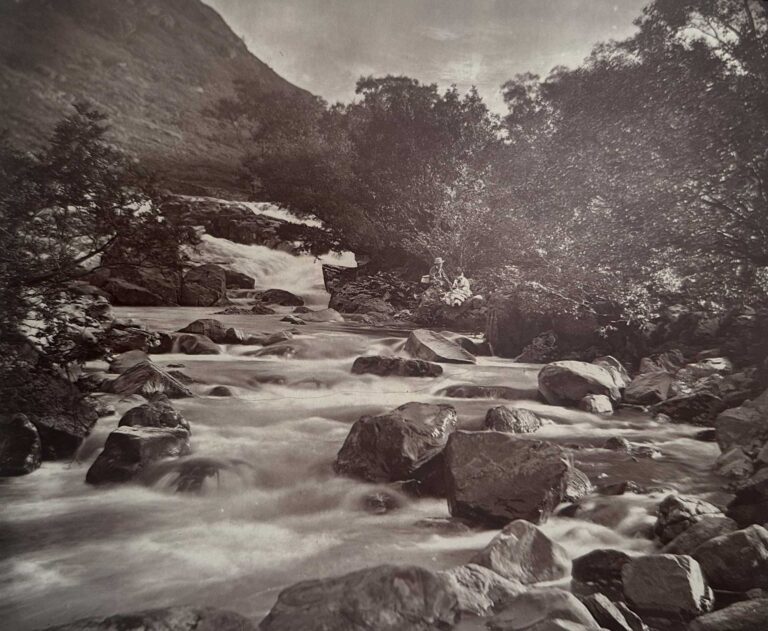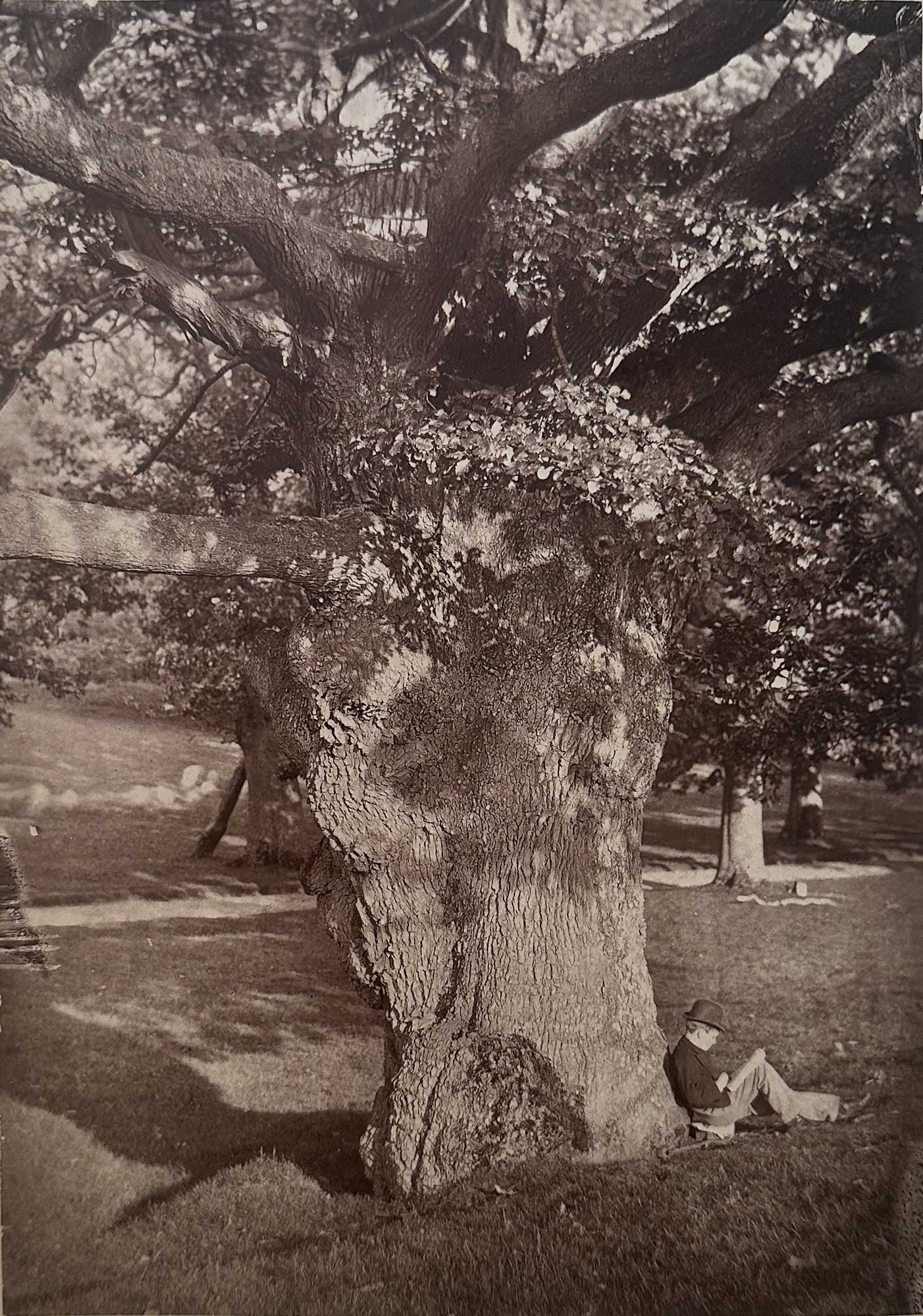
The Monarch of the Woods
Descriptive letterpress printed opposite this photograph:
THE MONARCH OF THE WOODS.
A GREAT and noble tree is the English oak, and we love it well. The form of the oak tree is a perfect emblem of its qualities so firm set, so massive and strong. You may always know it instantly; whether as a wintry skeleton form, bare and gnarled and angular, or in its summer garb of rich and finely massed foliage: always the monarch of the woods. “Hearts of Oak” is a simile that has become national, and the “Wooden Walls of Old England” built of oak have ever been the pride and boast of the English people and the terror of their enemies. And, in old English homes, the massive woodwork of the stately staircases and panelled rooms with high and elaborately carved chimney-pieces are all of solid oak. Carving in wood was more practised then than in recent times, and the oak was the tree of all others chosen for the purpose. The stately forest-king, having long dwelt and served without the old halls, finally served within them in many of these elaborate forms, or in that of heavy baronial tables for the banquet hall, looked down upon from above by other oaken supports to right royal roofs.
The tree was also once especially sacred and distinguished, because the holy mistletoe grew upon it. The common Celtic name for the tree was derw, from which was derived the word Druid, oaks being religiously venerated by that ancient British priesthood.
The two kinds of oak most frequent in Britain (the others being, with one exception, foreign) are distinguished as the common and the sessile-fruited; the chief difference between them being that the acorns of the common oak have stalks an inch or two long, and those on the sessile (or close sitting) fruited oak have no stems, but sit close to the branches. Like other forest trees they have two sorts of flowers, the little flowers on the hanging stems have only stamens; and those in twos and threes, on a stiffer, shorter stalk, are the flowers with stigmas, and, in fact, the future acorns. When immense forests existed over a great part of England, acorns were of importance for feeding the herds of swine; and in Hampshire and some parts of Northamptonshire, where the oak abounds, they are yet valued for that purpose.
No other tree has been so honoured in poetry and song. Shakespeare groups around it many of his best remembered scenes. It is beneath Herne’s Oak that the Merrie Wives of Windsor devise the discomfiture of Falstaff.
” Under an oak, whose antique root peeps out
Upon the brook that brawls along the wood,”
the melancholy Jacques moralizes ” into a thousand similes” his humorous sadness; and it is ” beneath the shade of melancholy boughs” that he vents his belief that « all the world’s a stage.” And it was amongst the boughs of an English oak-
“Wherein the younger Charles abode
Till all the paths were dim,
And far below the Roundhead rode
And humm’d a surly hymn.”
